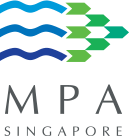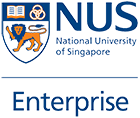Improving charging optimization using predictive modelling
Key Focus Area:
Digitalisation (AI, Cloud, Cybersecurity)
BACKGROUND
From 2030, all new harbourcrafts operating in Singapore’s port waters must be fully electric, be capable of using B100 biofuel, or be compatible with net-zero fuels such as hydrogen. To support the electrification of harbourcrafts, Singapore is developing its vessel charging infrastructure, and many companies have started piloting their vessel charging concepts. However, many factors pose a challenge to vessel charging, including tidal conditions, size of vessels, plug types, etc. As such, how might we improve the visibility and access to charging stations?
SIGNIFICANCE OF PROBLEM
- Singapore’s busy port experiences high traffic of approximately 140,000 ships passing through annually.
- If there are long waiting times for charging, there could be greater congestion which will reduce operational efficiency and affect the attractiveness of Singapore as a global seaport.
POTENTIAL MARKET SIZE
- Applicable to all-electric vessels, including Singapore’s harbour craft population of 1,600.
- The global electric vessel market size was USD 7.98 billion in 2022 and is expected to grow at a compound annual growth rate (CAGR) of 10.9% from 2023 to 2030.
EXISTING EFFORTS
- On land, there are multiple apps that display real time availability of EV chargers but this does not exist for the maritime sector yet.
- Companies like Yinson, Seatech, Pyxis, Paxocean/CSA, Seatrium, Penguin/Shell etc.
SOLUTION SUCCESS PARAMETERS
- Solution should account and optimise for:
- Tidal conditions, such as high and low tide
- Suitability of charging berth / space for different vessel types (e.g., cannot anchor too near the shore, width and length of vessel has to be compatible with charging space).
- Compatible with Power Management System / Battery Management System onboard vessel.
- Suitability and types of charging points (e.g. CCS2).
- Capacity of sea space.
- Friendly-user interface with real-time dashboards with key information, including.
- Location of charging points
- Availability status of charging points
- Estimated length of time required for charging
- Assuming no over-staying, to notify potential users when chargers are available (i.e. the e-HC currently occupying the charger has completed its charging)
- Interface with event notification that will prompt the user that e-HC charging has been completed to avoid over-staying
- Data acquisition and insights (Data aggregated shall be used by MPA or its consultant for analysis and insights to contribute towards the development of National Electric Harbour Craft Charging Infrastructure Standards and Master and Implementation Plan).
- App should be cyber-secured to prevent any unauthorised hacking or tampering of information.
- Incorporated with AI to advise the user on the best time to charge the e-HC, given availability of chargers.
- Open data standards and platform format to encourage users to adopt and access the ecosystem.
POTENTIAL SOLUTION SPACES
- Condense structure of battery modules so that batteries can be lighter and more compact
- Re-use of batteries from EVs
- Batteries compatible with fast-charging (charge rate of more than 2C)
- Close energy density gap between Li-ion battery and Marine Gas Oil, from the current 40 times difference down to 2 times difference
- Safety design of battery modules / compartment space for enhanced safety and performance
- Enhancing the efficiency of the battery system
- Battery Thermal Management System to ensure optimal cooling for the most effective Battery performance
- Enhanced battery features, such as
- Increased battery State-of-Health (SOH) and/or State-of-Charge (SOC)
- Longer battery life cycle
- Battery system with Load Balancing to redistribute energy from an electric battery across the individual cells with similar capacity and voltage


